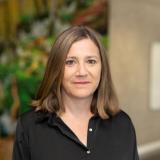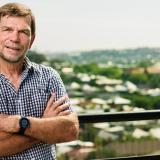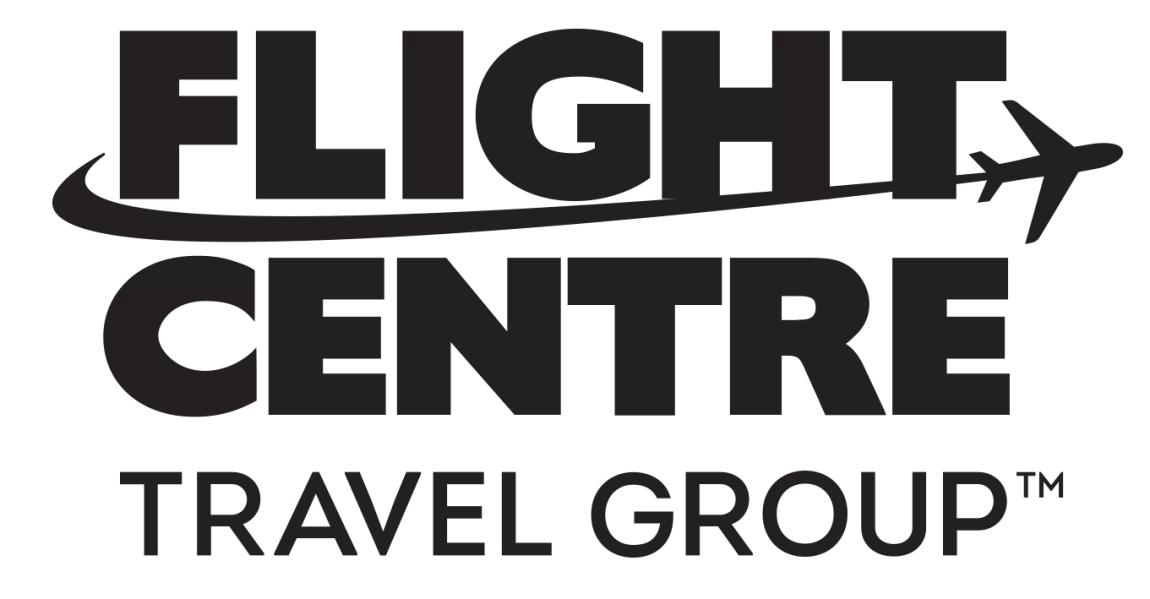The Future of Travel Design Challenge was run in partnership with Flight Centre Travel Group between July – November 2022.
This challenge has finished
Between 2019-2020, Australians spent over $64 billion on overseas travel. As domestic and international travel bounces back from the effects of the pandemic, there are ample opportunities to rethink the way we travel in 2022 and beyond. Everybody wants to have great travel experiences. But making that happen isn’t always easy in a post pandemic world and for some people, and some places, it might not even be possible.
Our challenge for you is: "How might we create innovative solutions to design the Future of Travel?"
In this challenge we’re excited to be teaming up with Flight Centre Travel Group as our key sponsor to encourage you to explore the five key challenge themes:
- Sustainability: How might we make travel more sustainable in order to protect our world?
- Inclusion and Accessibility: How might we increase inclusivity, access and affordability of travel?
- Culture and Identity: How might we enable travel to express and advocate for culture?
- Regional and Rural Development: How might we increase tourism to regional and rural Australia to engage and support local communities?
- Technology: How might we help travellers make better choices or improve their experience? Bringing tech and tourism together to improve people's journeys
Read on below to find out more about these problems and how to reframe them as opportunities so you can create an impact!
Challenge Details
- What is the challenge?
-
The Future of Travel Youth Design Challenge is a free online design thinking challenge that empowers youth to consider how they can impact travel, tourism and cultural experiences. It empowers youth to identify problems, reframe them as opportunities, develop a solution and create a prototype. Youth will also be able to enter the challenge and be in the draw to win prizes to help them develop their ideas further.
- Why is this important now?
-
After two years of lockdowns and travel restrictions, the future of the travel and tourism industry is looking bright as people seek out new travel experiences and destinations. As domestic and international travel bounces back from the effects of the pandemic, we have the opportunity to rethink and reshape the way we travel in 2022 and beyond.
Whether that means finding more sustainable, inclusive and accessible ways to travel, increasing regional tourism, or celebrating culture and embracing technology – as future travellers, young people are well placed to come up with innovative solutions for the future of travel!
- Winners and Prizes
-
There are two entry categories:
- 10-14 years olds (3 winners will be chosen)
- 15-21 year olds (3 winners will be chosen)
Winners will receive the following per idea:
- A virtual mentoring package from Young Change Agents (2 x 1 hr sessions)
- An invitation to an exclusive fireside chat with our special guest judges where you'll get advice, guidance, and support to further develop your idea
- The opportunity to be featured on our website and in our top ideas social media campaign
- Winners will also be invited to join Intrepid Travel for a special virtual session to explore what it means to work for both profit and purpose. This is the training that all Intrepid employees receive and is a great opportunity for our winners to learn from sustainable tourism experts at Intrepid!
14 runners-up will also receive a special reward for taking part and be featured on our site as a runner-up!
FAQs
- How do I participate?
-
Youth: You can do this challenge independently, with a friend, in a team, or with your siblings! Just download the resources, do the challenge, and submit a project page!
Educators & Parents: If you'd like your students or children to participate in this challenge, please download the resources via the signup form. You will receive access to all of the resources you need to run the challenge with your students or children. You can submit a project page on behalf of your students or children, or they can do it themselves. Instructions for entering the challenge can be found in the resources.
All challenge entries must be submitted by the challenge close date on Friday 4 November 2022.
- Will I get feedback?
-
All ideas submitted before the challenge close date on Friday 4 November 2022 will receive feedback from the Young Change Agents team.
- Who can enter?
-
Anyone aged 10-21 years old can enter and participate in this challenge.
- Who are Young Change Agents?
-
Young Change Agents is a not-for-profit social enterprise that empowers young people across Australia to find problems in their community, reframe them as opportunities, and then come up with solutions.
How is the challenge structured?
- 1. Choose one of the challenge areas
-
You need to choose one of the following themes to focus on:
Sustainability: How might we make travel more sustainable in order to protect our world?
Inclusion and Access: How might we increase inclusivity and accessibility of travel?
Culture and Identity: How might we enable travel to celebrate different cultures?
Regional and Rural Development: How might we increase tourism to regional and rural Australia to engage and support local communities?
Technology: How might we bring technology and tourism together to help travellers make better choices or improve people's journeys?
Now that you’ve chosen, it’s time to start the design challenge!
- 2. Explore the problem and dig deeper using empathy interviews
-
You want to start by deep diving into the challenge you’ve chosen. You may want to look at some of the additional resources to get a better understanding of the topic you’ve chosen.
Then, it’s time to find someone you can interview about the challenge. These interviews are known as “empathy interviews” as you start to learn more about the problem by empathising with the person you are interviewing and understanding some of the challenges they face.
So, find a partner and ask them to tell you about this problem and how it affects them. We have sample questions for each of the chosen themes but please feel free to ask your own as well.
For example: If you are exploring culture and identity, you might ask your friend questions like:
- What does culture and identity mean to you? What culture do you identify with?
- Thinking about your culture and identity, what specific tourism experiences most closely relate?
- On a scale of 1-10, how well represented is your culture in tourism experiences?
- Thinking of tourism experiences from around the world, what is an example of something that is done really well - something that celebrates a specific culture?
- What was it about that example that makes it a success?
- Have you seen anything that has been done poorly/unsuccessfully? What was it about it that you thought didn’t work?
Make sure to dig deeper as your partner answers by asking “why”!
To create a solution that will have a positive impact you need to think about who is being affected by the problem. Whilst we are all impacted by issues in the long run it’s important to be specific. Is it tourists, artists, small tour operators? Try and figure out who you want to help!
For example: If you were focusing on a challenge of “tourists finding out about local cultures” you might ask another student:
“Why is it difficult to find information about local cultures?”
Because they don't show up on the main travel websites
Why?
Because they don't rank as highly as major attractions
Why?
Because they don't have lots of photos
Why?
Because you're not allowed to take photos of these traditional ceremonies
Aha! So what if we made it possible to take photos of part of the cultural experience?
Of course, there are many reasons why tourists might not find out about local cultural experiences - you can pick lots of reasons and follow the same process to come up with a different root cause. In reality, solving problems needs to be done in multiple ways, and all together! That's why the Global SDGs are a call to action for everyone to work on these together in lots of different ways!
Make sure you take plenty of notes as you interview your partner. Keep your notes from these interviews and it will be useful for the customer/user section of your submission!
- 3. Define your problem
-
From your empathy interviews, you will get interesting insights about some problems this person might have in helping to be part of the solution. Take a look through your notes and circle all of the problems or challenges you found in your empathy interviews.
Now pick the one that is most important. This problem should also feel exciting for you to solve.
- 4. Reframe your problem
-
Now that you have identified the problem you are going to solve, it’s time to reframe that as an opportunity.
Let’s look at our example:
Our problem above was: “Tourists want to experience local cultures when on holiday but don't know how to find out about them.”
We want to reframe this so that we’re not thinking about this as a negative but rather, as an opportunity to be creative and innovative problem solvers! We do this by using a simple tool called a “How Might We” statement.
Let’s look at our example again: our How Might We statement for this problem could become: “How might we help tourists identify local cultural activities when planning a holiday?”
The trick with How Might We statements is to ensure they don’t include the solution in them. This limits our thinking. For example, we wouldn’t want a HMW statement along the lines of “How Might We create an app for tourists that cultural tour operators can add themselves to?”
- 5. Ideation
-
Now you have your opportunity, it is time to be creative and come up with ideas!
- Get a notebook, post-its or some coloured paper and come up with as many ideas as you can.
- Imagine you have one million dollars and you can do anything you want. Imagine you had to use tech to do it. Then imagine you had no access to tech..what would you do?
- Push yourself to come up with at least ten different ideas. Then take a break and try and come up with even more!
- Think about the audience you chose and how you could best help them.
Once you’ve got a lot of ideas, choose the one you think would best solve your opportunity. This is your solution.
Remember there’s no such thing as a bad idea!
- 6. Test the solution you have designed
-
Before you share your ideas or spend time building something, it’s a good idea to test and improve your ideas. This process is called validation. This could be done by talking to your parents about what you have created and asking for some feedback. You could even consult the target group you are trying to help (this may not work if you are helping animals), but you can make it even better as you get more feedback on your idea. Don’t forget to try and avoid close contact with people and use the internet and the phone where possible.
Another great way to test is to create a prototype - this is a draft version of your idea. You can do this by drawing what your idea would look like, creating a mini-version, building something out of recycled materials, or creating a plan of what the idea could look like. You can then show your prototype to potential users and ask for their feedback.
- 7. Share!
-
Now that you’ve got an idea, we want to hear all about it!
Click ‘Enter your idea’ at the top of this page to submit your idea.
Keep in mind we’ll ask you for a logo and a picture of your solution. This could be of your brainstorming, a picture of what your idea would look like, a poster promoting your idea or something else that is a visual representation of your idea.
- By submitting your idea via the Young Change Agents website, you'll automatically be entered into the challenge and you can also be notified of other opportunities that may help support your idea in the future.
Challenge Tips
Additional Resources
For Youth
Ready to take on the challenge and come up with creative ideas for the future of travel? Have an idea that you think could change the world?
Sign up for the challenge, share your idea, and have the chance to get the support you need to make your idea a reality!
For Educators
To get access to all the resources you need to run this challenge, including worksheets, curriculum links, slides, and other activities, please sign up below and we will share these with you when the challenge goes live!
If you're interested in Young Change Agents running a facilitated challenge for your students, please get in touch or book a workshop with us via the Contact page.
For Parents (of Under 18 Entrants)
The Future of Travel Youth Design Challenge is a great activity to build your children's confidence, and resilience and encourages them to view problems as opportunities. We provide you with all the resources you need to run this challenge with your children, including instructions on running the activities, submitting an entry, and additional resources to learn more about travel and tourism.
This challenge is great for parents of creative and curious children who need an engaging and hands-on activity to build their entrepreneurial mindset, skillset, and toolset.
Special Guest Judges

Tyler Miscannon
National Social Impact Manager @ Flight Centre Travel Group

Hailey Brown
Founder & CEO @ Vacayit

James Kavanagh
Global Leisure CEO @ Flight Centre Travel Group

Natalie Kidd
Chief People and Purpose Officer @ Intrepid Travel

Sarah Clark
Managing Director of ANZ @ Intrepid Travel

Graham 'Skroo' Turner
Founder & CEO @ Flight Centre Travel Group

